![]()
Wed, April 18, 2012 | This study[1] is originally published by The Meir Amit Intelligence and Terrorism Information Center
Section III: Subversion and Exporting the Islamic Revolution
Overview
Iran invests considerable resources in its battle for hearts and minds and in exporting the Iranian revolution in Latin American countries. It spreads Shi’ite Islam to Shi’ite and Sunni Muslim communities in Latin America, including descendants of immigrants from Syria and Lebanon. Exporting the Iranian revolution is orchestrated by Spanish speakers from Iran who have lived in Latin America and are well-versed in local society and politics.
One such individual is Dr. Mohammad Hassan Ghadiri. He served as Iran’s ambassador to Mexico, where he conducted intensive propaganda activities. Currently in Iran, he still has contact with delegations from Latin America (See below). Interviewed by ABNA, a website focusing on Shi’ite activity across the globe, he discussed in detail the question of why Latin America is a convenient environment for spreading Shi’a in America.[55] He said that “During my stay in Mexico, I became involved with different sectors of the population — young people, teenagers, adults, pupils, students, lecturers and so forth. It is my impression that, in general, Latin America is a very fertile environment for the introduction of Islam.”
Dr. Ghadiri went on to discuss several aspects of the spread of Islam in Latin America, which in our assessment reflect the view of the Iranian regime on the issue:
1) “Latin America was conquered by imperialism…Christian missionaries were at the side of the soldiers, the torturers…those are terrible memories inscribed on the tablets of history. Therefore, Catholicism, which is the ruling religion in Mexico, was brought in by the imperialists.
2) .”..The Americans treat Mexican and Latin American immigrants very badly…every Mexican, from the president down to the simplest peasant, resents it. The bad treatment received by the immigrants makes Mexicans and Latin Americans resentful of the United States. Therefore, anti-Americanism can be said to characterize Latin America.
3) “…America’s extensive cultural influence in Latin America and Mexico… naturally encouraged secular culture, weakening the Latins’ religious devotion. On the one hand, it is negative because American culture is corrupt. However, the lack, or the weakening of Catholic devotion…has paved the way for a link with Islam and its acceptance.”
In our assessment the view presented by Ghadiri is in fact currently being extensively implemented on the ground. For example, on February 16, 2012, it was reported to the US Congress that in the past decade Iran had created 17 cultural centers in Latin America involved in spreading Shi’ite Islam and Khomeinist ideology.[56] The centers conduct activities related to exporting the Iranian revolution and may also constitute a support network for subversive and terrorist activities, as seen by the AMIA bombing. One case study is the intensive activity of Mohsen Rabbani, who was involved in the AMIA terrorist attack and is currently engaged in exporting the revolution to Latin American countries.
Mohsen Rabbani: Profile of an Iranian Cleric Who Engages in the Battle for Hearts and Minds and in Subversive and Terrorist Activity in Latin America
Overview
Hojjat-ol-Eslam Mohsen Rabbani is an Iranian Shi’ite cleric who came to Argentina in 1983. He established himself in local society and was a sheik at the At-Tauhíd mosque in Buenos Aires. He exploited his position to create an Iranian intelligence network in Argentina which participated in preparations for the terrorist attack on the AMIA building.
In 1993 Rabbani was transferred to the Iranian embassy in Buenos Aires (with the title of “cultural attaché”) and played a major role in logistical and intelligence preparations for the AMIA bombing in 1994, in which 85 people were killed and more than 300 injured. Rabbani currently resides in Iran, from where he directs an extensive network for spreading Khomeinist ideology in Latin American countries, which, in our assessment, may also be used for subversion and terrorism.
Terrorist Past: Mohsen Rabbani’s Involvement in the AMIA Bombing, 1994
According to the AMIA bombing report released by Dr. Alberto Nisman, the Argentinean special prosecutor, Mohsen Rabbani participated in preparations for the AMIA bombing as well as in the forum which made the decision to carry out the attack.
According to the report, preparations for the attack were as follows:
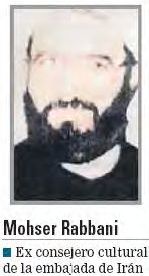
Mohsen Rabbani's picture on the list of wanted Iranians issued by the Argentinean authorities after the the AMIA bombing investigation report was released.
“Numerous pieces of evidence show that Argentina was infiltrated by Iran’s intelligence service, which in the mid 1980s began establishing a vast spy network that then became a complete “intelligence service” that basically comprised the Iranian embassy and its cultural attache in Buenos Aires; extremist elements that were associated with the Shiite mosques At-Tauhíd in Floresta, Al Iman in Cañuelas and El Mártir in San Miguel de Tucumán; the businesses that we refer to as “fronts” — G.T.C. and Imanco; as well as other radicalized members of the Islamic community, who were in Argentina for the sole purpose of gathering the information and making the arrangements that paved the way for realization of the attack on AMIA on the morning of July 18, 1994.
Our report shows that the driving force behind these efforts was Sheik Mohsen Rabbani, who later became the cultural attache of the Iranian embassy in Argentina. From the time of his arrival in the country in 1983, Mr. Rabbani began laying the groundwork that allowed for later implementation and further development of the spy network referred to above. All of the elements that went to make up this infrastructure were interlocked, and involved the implementation of an intelligence service in Argentina that had sufficient capacity to successfully organize the activities that culminated in the attack. As can be seen when one reads the presentation that was made to the judge in the case, the bomb explosion at AMIA constituted this culmination.
In our view, the record shows that once the decision had been made to carry out the attack, the information flow between Iran and its Argentinean embassy substantially increased, basically via functionaries and diplomatic mail. At the same time, substantial amounts of money were transferred from Iran to one of the bank accounts held by the aforementioned Mr. Rabbani — who was indisputably the leader of the “mullah” regime in Argentina and perhaps its most representative member from an ideological standpoint — and involved considerably larger sums than in comparable periods that were assessed.
In this regard, we have proven that soon after Mr. Rabbani’s return to Iran, where, as previously mentioned, he had been summoned to participate in a meeting during which the decision was made to carry out an attack against Argentina, and only four months prior to the crime itself, funds were sent to Mr. Rabbani from Iran amounting to no less than USD 150,812, of which USD 94,000 was withdrawn prior to the date of the attack (July 18, 1994), and USD 45,588 of which was withdrawn over the course of the two months following the attack.
Mr. Rabbani’s involvement in preparations for the attack is demonstrated even more clearly by the incontrovertible documents indicating that during this same period Mr. Rabbani visited several car rental agencies in Buenos Aires in search of a utility vehicle similar to the one that was parked outside Calle Pasteur 633 [no. 633 Pasteur Street] a few months later. The various explanations the cleric provided (which were obtained from various statements, including ones Mr. Rabbani made during a TV program) were so confused and contradictory that, as can be seen from our present report, they do little more than confirm that the real reason for his search for a vehicle bore little relationship to the various explanations Mr. Rabbani provided.
The evidence we analyzed indicates that Mr. Rabbani was in charge of the local logistics for the attack, while other evidence indicates that the then Iranian minister of information Ali Fallahijan was in charge of overall coordination of the operation from Iran. Furthermore, we found that the identical type of work, albeit strictly limited to the operational aspect of the attack, was realized by the then head of Hezbollah’s foreign affairs department, Imad Moughnieh. In this regard, reports that were entered in the court record suggest that Mr. Mougnieh was in charge of establishing the operational group whose task it was to carry out the attack. The members of this group in all likelihood entered Argentina in early July 1994, as is shown by the international phone records that were analyzed by our investigation unit.
Also discussed in the report is Rabbani’s participation in a forum convened in the city of Mashhad in August 1993, attended by Iran’s senior leadership. It was at that meeting that the decision to carry out the attack was made:
The decision to go ahead with the attack was made by the Special Affairs Committee (Omure Vijeh in Farsi) on August 14, 1993 in the city of Mashad, at which time the decision was approved by Ali Khamenei, Ali Akbar Rafsanjani, Ali Akbar Velayati and Ali Fallahijan.
Moreover, two prominent representatives of the Iranian regime that were serving in Buenos Aires at the time were specifically invited to attend the meeting in Mashad (hereinafter referred to as the “Mashad meeting”). These parties were the Shiite cleric Mohsen Rabbani, sheik of the At-Tauhid mosque (and later named cultural attache of the Iranian embassy in Argentina), and Ahmad Reza Asghari (also known as Mohsen Randjbaran), who had served in Iran’s renowned Revolutionary Guard, and at the time was third secretary at the Iranian embassy in Buenos Aires…”[57]
Exporting the Revolution from Iran to Latin America
Having fled from Argentina because of his involvement in the AMIA terrorist attack, Rabbani moved his base of operations to Iran. Currently based in the Iranian city of Qom, he directs extensive activities in Latin America and makes brief sporadic forays into Latin American territory. After the investigation of the AMIA bombing, and at Argentina’s formal request, Interpol issued a warrant (“red notice”) for the arrest of Mohsen Rabbani with a view to extradition. Thus since November 2006 Rabbani’s movement outside of Iran has been restricted. He overcomes the restrictions by flying from Iran to Latin America (particularly Brazil, where his brother resides) under a false identity and exploiting his diplomatic immunity.
In our assessment, in addition to exporting the Iranian revolution (See below), Rabbani is in contact with terrorist networks in Latin American countries. Evidence can be found in a press release from the office of the US Attorney General (October 21, 2011) about the an imam from Trinidad, convicted for planning to carry out a terrorist attack at JFK International Airport by blowing up gas tanks and jet fuel lines running under the airport. The would-be perpetrators sent cell member Abdul Kadir to Iran to meet Iranian contacts, one of whom was Mohsen Rabbani. Abdul Kadir was arrested in 2007 after boarding a flight to Venezuela, from where he planned to fly to Iran.
Rabbani’s skills in orchestrating subversion and terrorism, and spreading the ideology of the Iranian revolution in Latin America are currently being exploited by the Iranian regime for spreading radical Islam and Shi’a in Latin America. As chief of Andisheh Sharq (Oriental Thought), a cultural institute in Qom, he is involved in exporting the Islamic Revolution and Shi’a to the countries of America. The institute sends Iranian clerics to Latin America, trains local activists, distributes Spanishlanguage propaganda, and operates a website in Spanish.
In addition, Rabbani is international affairs advisor to the president of Al-Mustafa International University in Qom. Ayatollah Dr. Mohammad Reza Arafi, the head of the university, said in late February 2012 that 120 foreign students were enrolled in the university, and that it was a center for spreading “pure Islam” (i.e., Iranian-style Shi’a) around the globe.
Mohsen Rabbani frequently meets with Latin American delegations visiting Iran. In February 2012 he accompanied one such delegation to a meeting with Mohammad Hosseini, Iran’s minister of culture and Islamic guidance. At the meeting, Mohammad Hosseini praised the growing pace of conversion to Islam in Latin America. He said that “the spirit of istishhad“[58] had grown stronger as a result of Iran’s firm stand against the West. He added that many Muslims in Islamic territories, such as Palestine and Lebanon, inspired by Iran, were willing to sacrifice their lives for Islam. He speculated that Iran’s relations with Latin America would become closer in the near future, and said that more books about Islam should be translated into Spanish and distributed in Spanish-speaking countries.[59]
Oriental Thought Cultural Institute (Andisheh Sharq)
Andisheh Sharq Institute, headed by Rabbani, directs intensive propaganda activities in Latin American countries, including:
1) Sending young Iranian clerics to Latin American countries to spread Iranian-style radical Shi’ite Islam: To prepare for such missions, clerics train for three years, and study a variety of subjects to help them in their activity in Latin America: Spanish, religions and cultures of Latin America, and skills for converting Spanish speakers to Islam. In February 2012 Hojjat-ol-Eslam Ruhollah Maheri, the deputy director of the institute, announced that registration was open for the eighth course.[60] Those interested were asked to call the institute or send an application form by email (AmuzehSpanish@gmail.com).
2) Distributing Spanish-language books to Latin American countries: On March 7, 2011, it was reported that a few days earlier, the institute headed by Rabbani had released a book in Spanish containing Iranian Supreme Leader Ali Khamenei’s most important statements and Quran interpretations by top Shi’ite clerics. According to Rabbani, the institute’s books are distributed in Venezuela, Colombia, Brazil and other Latin American countries.[61] Hojjat-ol-Eslam Ruhollah Maheri, the institute’s deputy director for education, said that the institute had distributed tens of thousands of Spanish-language books about Islam and the Islamic Revolution in Spanish-speaking countries. The books, he said, had “a tremendous impact” on public opinion in those countries.[62]
3) Building a website in Spanish: In May 2011 Rabbani participated in the inauguration of a new website, which he referred to as “the biggest Spanish language Islamic website.” At the ceremony he discussed the mission of Andisheh Sharq Institute in Latin American countries: sending clerics, both Iranians and locals, to various regions in Latin American countries; providing clerics sent to Latin America with training in science and culture; giving Spanish courses to Iranian clerics; helping Islamic centers in Latin America; cooperating with Iranian organizations abroad to establish networks of local activists; creating new Islamic centers and mosques; and running an online newspaper called “The Third Way,” which, according to Rabbani, was “the only [online] Islamic newspaper in the world.”[63]
In April 2011 Rabbani was interviewed by the website of Qom’s religious seminaries. He went into detail about the extensive propaganda activities conducted by Iran in Latin America.[64] Among other things, he said the following:
1) Many religious groups and organizations have started operating in Latin American countries. As a result, Muslims and Arabs, particularly in Brazil and Argentina, who had earlier hidden their religious affiliation, were becoming confident and secure enough to be open about their Islamic identity. Many journalists, writers and intellectuals in Argentina, Colombia, and other Latin American countries, he said, had converted to Islam in recent years, and “the American myth” had been shattered, and the nations of the region cherished Iran.
2) Iran has sent a number of top clerics to Latin American countries (Rabbani named a few) and more should be sent. Islamic “cultural centers” operates in Chile, Bolivia, Cuba, Colombia, El Salvador, etc. Local Muslims also want access to radio and television channels.
3) Books about Islam and Shi’a are distributed in Latin American countries., and the number could be increased to reach larger target audiences. “We went to local publishers,” Rabbani said, “to have them publish those books that need to be focused on. However, Iran is working to establish its own international center for distributing the books…” According to Rabbani, the international center will be based in Qom or even in Beirut. “Right now we are busy publishing thousands of copies of 120 different Spanish-language books about Islam for children, so that more and more children and teenagers in Spanishspeaking countries are exposed to Islam…”
4) Iran’s academic relations with Latin American countries need to be expanded. The people of Latin America should be taught how to speak Persian, and maybe also Arabic.
5) “We have created various websites in Spanish for our purposes…thanks to the freedom of the press in Argentina, we’ve purchased a lot of air time on various radio and television stations. We have [also] been able to publish many articles in local newspapers…In addition, we have rented an entire radio station that now broadcasts and disseminates Islam…”
6) “…We also created an Islamic radio [station] in Bolivia. In addition, we created an online radio station in Colombia. Through the Andisheh Sharq Institute [which Rabbani heads], we are planning to create more online radio and television stations to spread the word of Islam to more and more Spanish speakers…We intend to receive the appropriate licenses from local governments so that we can establish our own official radio and television stations.”
7) “[Venezuela’s President] Mr. Chávez has played an important role in facilitating our activity throughout the entire region. This is because before Mr. Chávez, our activity was banned by many countries in the region. However, Mr. Chávez has helped us a lot, and we now enjoy better conditions…”
8) “…We need to establish centers for spreading Shi’a rather than just mosques, which Saudi Arabia is building in these countries [in Latin America]. Muslims or those who have converted to Islam are very sensitive about such issues as Palestine, Lebanon, Yemen, etc…These Muslims pray for Iran, and they do not want to see Iranian society divided…”
Clerics in Latin America Handled by Rabbani
Argentina
Activity in Argentina
For several decades Iran has conducted intensive propaganda activity in Argentina. It is directed in part by Mohsen Rabbani, who operated in Buenos Aires in the 1980s and in the first half of the 1990s and is currently based in Iran. His activity includes disseminating radical Shi’ite Islam in Argentina, increasing support for Iran and Hezbollah, and inculcating hatred of Israel and the United States.
His activity is shown in the following photographs:
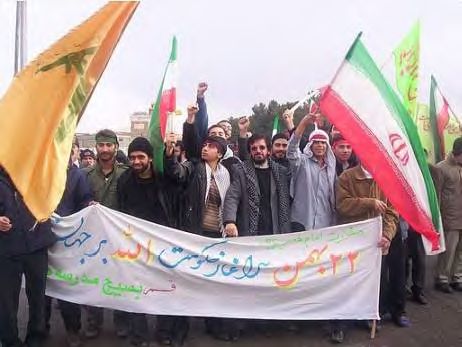
A delegation of La Asociación Argentino Islámica, an Argentina-based pro-Iranian organization, on a visit to Iran in 2008. The delegation members carry the flags of Iran (right) and Hezbollah (left) (elrejunteil.wordpress.com)
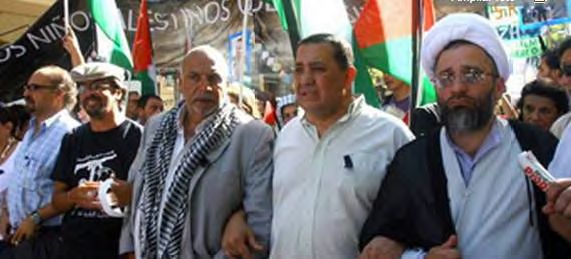
Anti-Israeli demonstration held in Argentina in 2009: one of the demonstrators (right) is dressed as a Shi'ite (Iranian) cleric; another (left) is wearing a shirt with the Hezbollah logo (mdzol.com)

The homepage of La Asociación Argentino Islámica (as of March 11, 2012). The connection to Iran is clear: the homepage features a photograph of Ayatollah Khomeini and a photograph of a demonstration in Argentina where participants carried Hezbollah flags and a photograph of Hezbollah leader Hassan Nasrallah (asai.org.ar)
According to Ambassador Noriega’s testimony before the US Senate, at least two mosques in Buenos Aires, the Al-Imam mosque and the At-Tauhíd mosque, are run by sheiks recruited by Rabbani. The Al-Imam mosque is headed by Sheik Abdullah Madani. The mosque is also the headquarters of the Asociación Islámica, one of the most prominent Islamic cultural centers in Latin America, established in 1990.

The Al-Imam mosque in Buenos Aires (la Mezquita Al- Imam de Cañuelas), which also serves as a cultural center. The emblem of Iran can be seen above the door. (shiatv.net)
In his testimony, Noriega also describes the activity of Rabbani’s disciples outside of Argentina:
1) Sheik Karim Abdul Paz, who studied under Rabbani in Qom for five years and succeeded him as the head of the At-Tauhíd mosque in Buenos Aires. The sheik is currently the imam of an Islamic cultural center in Puerto Montt, Chile (Centro Chileno Islámico de Cultura de Puerto Montt).[65] The sheik does not hide his sympathies for Middle Eastern terrorist organizations and maintains that Hezbollah is not a terrorist movement, but a “fundamental part of the heroic worldwide resistance against the US and Israel’s terrorist imperialism.” This worldview, apparently, is what Rabbani is teaching to Latin American converts during his courses in Iran.[66]
2) Sheik Suhail Assad, an Argentinean who has embraced radical Islam under Rabbani’s influence, is a lecturer at universities in Latin America where he recruits young supporters who share his views.[67] He visited in Puno, Peru as the guest of honor for an event hosted by the “Casas de ALBA,” political activist groups formed in Peru to support the Bolivarian revolution (led by Hugo Chávez). The groups are hostile to the United States and Israel.[68]
Brazil
Mohsen Rabbani places great significance on activities in Brazil, a country with a large Muslim population. Groups from Brazil visit him in Qom, Iran, where they receive a “religious training” of sorts. According to the popular Brazilian weekly Veja, from 2007 to 2011 three groups of Brazilians visited Iran for such training.[69]
The Brazilian weekly Veja described one of the classes given in Qom by Rabbani, referred to as “professor” by his students, to 17 people. Eight of them were young Brazilian converts to Islam, who were sent to Qom and had all their expenses paid by the Iranians. When Brazilian police searched Brazilian students returning from Iran, they found propaganda against Israel and the Jews. Such recruitment efforts are a cause for concern for Brazilian authorities and are mostly carried out in Brazil’s underprivileged areas, where there is usually no Muslim population.[70]

Rabbani (in a black frame) photographed in Qom in 2011 with eight Brazilian converts to Shi'ite Islam (interamericansecuritywatch.com)
According to Noriega’s testimony before the US Senate, Rabbani frequently travels to Brazil to meet his brother, Mohammad Baquer Rabbani Razavi, the founder of the Iranian Association in Brazil, an organization which recruits students and sends them to Iran.[71] One of Rabbani’s principal collaborators is Sheik Khaled Taki Eldyn, a radical Sunni Muslim from the São Paulo Guarulhos mosque. Taki Eldyn is involved in religious activities with Shi’a mosques and serves as the secretary general of the Council of the Leaders of the Societies and Islamic Affairs of Brazil. In his testimony, Noriega said that the mosque in Sao Paulo was affiliated with a network in the triple frontier region which, according to the US Department of Treasury, provided logistical assistance to Hezbollah.
According to Brazilian sources, Mohsen Rabbani used forged documents to travel to Brazil to recruit converts to Islam. The Brazilian federal police reported that during one of his last visits to Brazil, he acted in a way which could provoke a diplomatic crisis. Police sources said that Rabbani (who is wanted by Interpol) boarded a flight from Tehran to Caracas, Venezuela. From there he entered Brazil illegally. The government of Venezuela did not disclose to Interpol the passenger list for the flight. An article on the incident said that the Tehran-Caracas flight, operated by Iran’s official carrier, is referred to as “Aeroterror” by intelligence officials since it facilitates the access of terrorist suspects to Latin American countries. Brazilian security services, which had put Rabbani under surveillance, were planning to detain him in Brazil, but he was able to escape.[72]
Another cleric mentioned to the Senate by Ambassador Noriega was Sheik Khaled Taqi Aldyn, an Islamist from the Guarulhos mosque in São Paulo, Brazil. He is affiliated with Shi’ite mosques in Latin America and was chairman of the Council of the Leaders of the Societies and Islamic Affairs of Brazil. According to the testimony, the São Paulo mosque was found to be associated with a network in the triple frontier region which provides Hezbollah with extensive financial and logistical assistance.[73]
Conclusions
The implications of Rabbani’s activities in Brazil and Argentina were presented by Dr. Alberto Nisman, Argentina’s prosecutor general, who investigated the AMIA bombing: “Rabbani is a serious threat, including in Brazil. In Argentina, he spread his vision of radical, extremist, and violent Islam, which resulted in dozens of casualties during the Buenos Aires terrorist attacks. Now, based in Iran, he continues to play a significant role in the spread of extremism in Latin America.”[74]
Dr. Mohammad Hassan Ghadiri Abyaneh: Profile of an Iranian Foreign Ministry Official Involved in the Battle for Hearts and Minds in Latin America
Overview
Mohammad Hassan Ghadiri Abyaneh, born in Tehran in 1953, is a career Iranian diplomat who has supported the Islamic regime from its inception. He graduated cum laude in 1971 from the University of Florence, Italy, and received his PhD in architecture. He also received a degree in strategic management from the National Security University in Iran. He has authored eight books on Islam, Christianity, and women in Islam (including This Is Islam, published in 2008 in English and Spanish).
Ghadiri has been a fanatical supporter of Khomeini and the Iranian regime since the Islamic Revolution in 1979. As a student in Italy in the 1970s he established an Islamic student association which was joined by Iranians studying in Italy. His diplomatic career in the Foreign Ministry began immediately after the revolution; he has been ambassador to both Australia and Mexico (and speaks Spanish, among other languages).
Ghadiri is an advisor and top expert for the Iranian Foreign Ministry. He is also a member of the International Council at the Research Institute of Islamic Culture and Thought. He maintains contacts with various elements in Latin America. In late February 2012 he hosted a Latin American delegation visiting Iran, and spoke with its members on Islam, the Islamic Revolution and the revolution’s impact on Latin America.[75]
Mohammad Ghadiri’s Worldview and Statements
Ghadiri is a fanatical supporter of the Islamic regime in Tehran and is known for his extremist views. He believes that radical Islam and Shi’a need to be exported to Latin American countries by converting locals and exposing them to Iranian indoctrination.
The following are Ghadiri’s statements on various issues:
1) Ghadiri ran for the city of Kashan in the March 2, 2012 parliament elections, but was not elected. Before the elections he told the Iranian media that “global change depends on the annihilation of the Zionist regime.”[76]
2) On April 31, 2011, Ghadiri gave a speech at the Islamic Awakening Conference held by Khamenei, attended by Islamic delegations from around the globe. He strongly condemned Saudi Arabia for allegedly wasting the “Islamic land’s” oil money. He suggested renaming Saudi Arabia “Mohammedan Arabia.”[77]
3) Ghadiri endorsed Khomeini’s fatwa calling for the death of Salman Rushdie. Interviewed on February 15, 2012, he again stressed he believed Khomeini was right and that Rushdie had to be put to death.[78]
4) Ghadiri has called on the Iranian regime to execute Amir Mirzaei Hekmati, a young American of Iranian descent living in Iran, who was arrested in September 2011 for espionage and sentenced to death. That way, according to Ghadiri, “the United States will understand who it’s dealing with.” He said that if elected to the parliament, he would work to impose harsher punishments on those who “assist the enemy” and target more people for execution[79] (Note: Amir Mirzaei’s death sentence was revoked on March 6, 2012 by the Iranian Justice Ministry).
5) Ghadiri strongly supported the Iranian regime’s crackdown on the reformist movement two years ago. He has written dozens of articles against the reformists and believes that stricter measures should be taken against those who support the protest against the regime.
Ghadiri’s Activities in Mexico: Shi’ite Islamization and the José Tolentino Affair
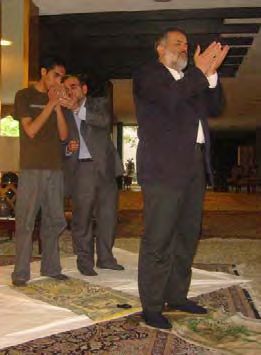
Dr. Ghadiri, while Iran's ambassador to Mexico, teaching a young Mexican convert to Shi'ite Islam how to pray (iranhami.ir)
While Iran’s ambassador to Mexico, Mohammad Ghadiri was active in converting Mexicans to Shi’ite Islam and exporting the Iranian revolution. He sent converts to study religion in Iran, and reinforced Iranian influence in Mexico. According to a WikiLeaks document from 2009, he made anti-Semitic statements while ambassador to Mexico. The authorities regarded them as problematic by local authorities and his activities were closely monitored by Mexican secret services.[80]
One example of Ghadiri’s activities in Mexico was the José Tolentino affair. Tolentino was a young Mexican who was sent to study religion in the city of Qom in 2011 after allegedly pretending to have converted to Islam. He said that the idea to go to Iran arose after a meeting with Ghadiri in the Iranian embassy in Mexico. At the meeting he was offered studies of Shi’a in Iran to be followed by the position as the head of a mosque in Mexico to spread Islam in his home country.
Tolentino came to Iran and studied Shi’ite religion and the Islamic Revolution in Iran. Other students came from Argentina, Bolivia, Colombia, Ecuador, and Venezuela. They were also taught how to run mosques. One of his teachers in Qom was Mohsen Rabbani. Tolentino said he was particularly surprised by the concept of martyrdom — the willingness to sacrifice one’s soul for eternity in paradise — preached by his Iranian teachers (Note: The concept is one of the factors motivating suicide bombers.)
José Tolentino claimed that during his studies in Iran, he was exposed by the Iranians, who found his surveillance equipment, but was able to escape to his home country with the assistance of the Mexican embassy in Iran.[81]

Dr. Ghadiri, while Iran's ambassador to Mexico, giving a copy of his book on Islam to José Tolentino (forum.internet-haganah.com)
This section is part of the study dealing with Iranian and Hezbollah activities in Latin America. The other two sections can be found here:
- Section I – Terrorism: Latin America as an arena for Iranian-Hezbollah terrorism.
- Section II – Criminal activities: Iranian and Hezbollah involvement in criminal activities which serve as a source of revenue and and also serve their subversive and terrorist activities in Latin America.
![]()
Notes:
[55] http://abna.ir. For details on the process of Islamization and its impact on Latin America, see Lt. Col. Curtis C. Connell, “Understanding Islam and its Impact on Latin America,” USAF.
[56] americasforum.com.
[57] For further information see the appendix to the November 16, 2006 bulletin “Argentina accuses Iran of responsibility for the Hezbollah terrorist attack which destroyed Jewish Community Center in Buenos Aires, 1994. The Argentinean Attorney General’s office announced it had found Iran responsible for the terrorist attack and an Argentinean judge issued arrest warrants for seven senior Iranians and one senior Hezbollah member.”
[58] Istishhad — a Muslim’s martyrdom for the sake of Allah. In the terminology used by Palestinian terrorist organizations, a suicide bomber is referred to as istishhadi, i.e., a person who willingly sacrifices himself for the sake of Allah.
[59] Fars News Agency, February 12, 2012.
[60] Rasa News Agency, February 15, 2012.
[61] sabadnews.com.
[62] Rasa News Agency, February 15, 2012.
[63] hawzahnews.com, May 27, 2011.
[64] hawzah.net, May 1, 2011.
[65] Roger F. Noriega’s testimony before the Senate.
[66] freerepublic.com, June 24, 2011.
[67] Roger F. Noriega’s testimony before the Senate.
[68] caribbeannews.com, February 21, 2012. According to the article, there is reason to suspect that terrorist networks have enhanced their infrastructure to include the triple frontier region between southern Peru, northern Chile, and northwestern Bolivia, where the Iranians have mosques and culture centers. In addition, Iran conducts extensive social activities in the region (such as building clinics and educational facilities), and has one of its largest embassies in Latin America in La Paz, the capital of Bolivia.
[69] freerepublic.com, June 24, 2011.
[70] freerepublic.com, June 24, 2011.
[71] freerepublic.com, June 24, 2011.
[72] freerepublic.com, June 24, 2011; Merco Press (South Atlantic News Agency), April 4, 2011, freerepublic.com; Anna Mahjar-Barducci, “Iranian Mullah Responsible for terrorist attacks in Argentina (freerepublic.com, June 24, 2011).
[73] americasforum.com.
[74] Anna Mahjar-Barducci.
[75] ghadiri.ir.
[76] ghadiri.ir, February 28, 2012.
[77] ghadiri.ir.
[78] ghadiri.ir.
[79] ghadiri.ir, January 14, 2012.
[80] noticias.univision.com.
[81] noticias.univision.com.



 RSS
RSS

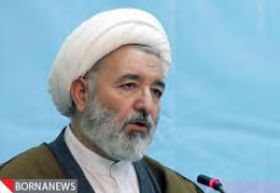
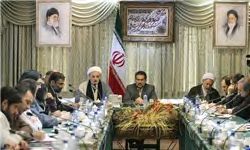
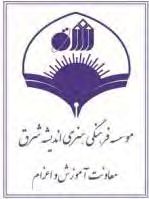


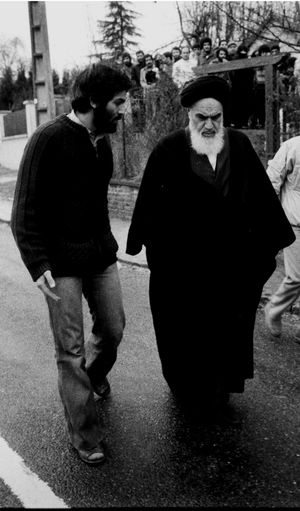
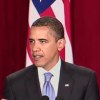
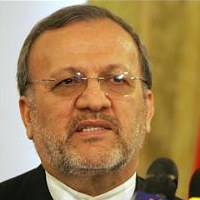
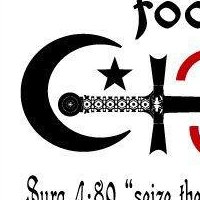
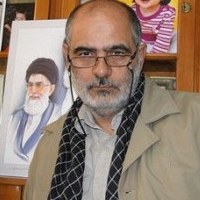
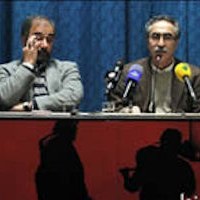




[…] Section III – Subversion and exporting the Islamic Revolution: Exporting radical Islam and Shi’a, and fostering hatred for the United States and its allies (including Israel) in Latin America as part of Iran’s global strategy. […]